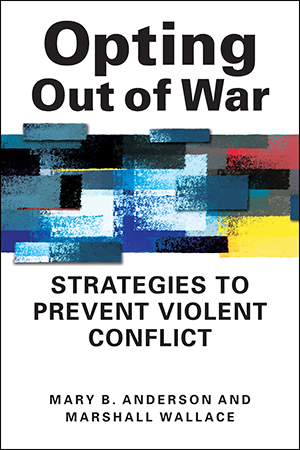
- 2012/193 pages
- Also available as a Nook Book from Barnes & Noble
Opting Out of War:
Strategies to Prevent Violent Conflict
Hardcover: $52.50
ISBN: 978-1-58826-876-1
Paperback: $27.50
ISBN: 978-1-58826-877-8
Ebook: $27.50
ISBN: 978-1-62637-426-3
A Global Observatory Must-Read Book in Peace and Security!
How do ordinary people, neither pacifists nor peace activists, come to decide collectively to eschew violent conflict and then develop strategies for maintaining their region as a nonwar area despite myriad pressures to the contrary?
Mary Anderson and Marshall Wallace analyze the experiences of thirteen nonwar communities that made conscious—and effective—choices not to engage in the fighting that surrounded them. Tracing the steps that these communities took and the strategies that evolved in each setting in response to local circumstances, the authors find lessons, as well, with broader relevance for international efforts to prevent violent conflict.
How do ordinary people, neither pacifists nor peace activists, come to decide collectively to eschew violent conflict and then develop strategies for maintaining their region as a nonwar area despite myriad pressures to the contrary?
Mary Anderson and Marshall Wallace analyze the experiences of thirteen nonwar communities that made conscious—and effective—choices not to engage in the fighting that surrounded them. Tracing the steps that these communities took and the strategies that evolved in each setting in response to local circumstances, the authors find lessons, as well, with broader relevance for international efforts to prevent violent conflict.







